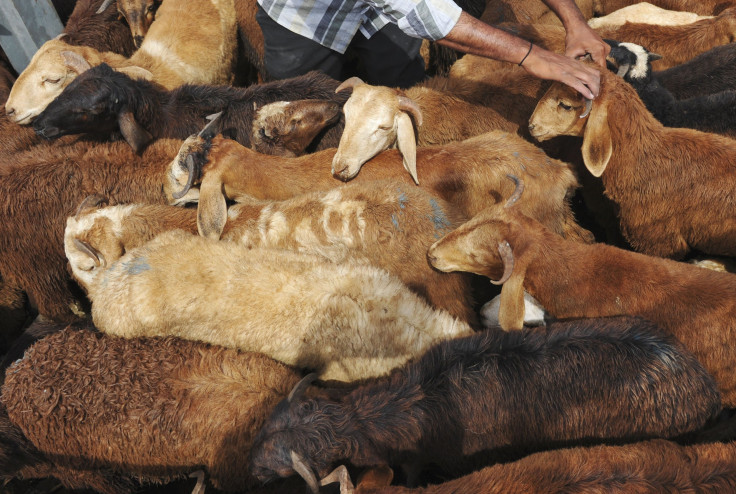What Is Cyclopia? 'Alien Goat' Shocks Villagers In India

A mutant goat with bulging eyes and a permanent pout on its face has been terrifying the villagers in Chennai, a city in southern India. It has massive white eyes and pouted lips forcing its tongue to loll out of his mouth, according to reports.
The goat’s owner, Mukhri Das, spoke to the Sun and said, “I was shocked. It’s like a miracle and people have been coming to our place to see this baby goat." A video was shared by the Sun, which shows the animal getting licked by its mother minutes after it was born. Despite the deformities, the mother goat is quite besotted with the animal.
The video also shows the locals surrounding the baby goat talking in disbelief as they try to determine what is wrong with the goat. The goat’s unusual features make it look like an aged, feeble woman. Pictures of the goat also went viral on Twitter.
Freaky mutant goat with two massive eyes terrifies... https://t.co/ymzbitvMi1 pic.twitter.com/NEWkFOE2Zv
— Wufu (@iundrestmatdyou) September 14, 2017
The goat, with the bizarre features, is said to be suffering from a deformity called cyclopia. Cyclops animals are the result of mutations that are almost always fatal before or shortly after birth. Cyclopia can occur in most mammals including humans and is generally marked by a failure of the forebrain and nasal area to develop. The deformity can either develop from toxins and environmental pollution or due to Trisomy 13.
According to Genetic Home Reference, the National Library of Medicine website for consumer information about genetic conditions, Trisomy 13 or the Patau syndrome is associated with harsh intellectual disability and certain physical aberrations in parts of the body. Individuals with Trisomy 13 often suffer from heart diseases, or brain or spinal cord abnormality. They may also have a very small or poorly developed eye, a few extra fingers or toes, a cleft lip or a cleft palate.
Interestingly, this is not the first time that such a mutant goat has been found. A goat with one large eye in the middle of its forehead suffering from the same birth defect was born in a village in Assam, India, on May 10. Though it was predicted that it would die in a few days, it defied the expectations.
A study was published by Alexandria Journal of Veterinary Sciences in 2014 to understand cyclopia. The study was conducted on a cyclopean male goat when that was brought by a local producer to the department of anatomy and embryology, Faculty of Veterinary Medicine, University of Sadat city. Researchers scanned the goat's head with computed tomography (CT) and conducted an animal autopsy, necroscopy. The goat lived for only 10 hours after birth.
In October 2011, a shark with cyclopia made headlines. It was cut from the belly of a pregnant shark captured in the Gulf of California. Scientists that examined the shark reported it had a single large eye which was made up of functional optical tissue. They also added that it was likely the shark wouldn’t have survived had it been born.
According to a report published by the Live Science, cyclopia is not so common in human beings. It affects an average of one in every 100,000 births. The report also states that any species which is born with these severe defects have low chances of survival. The defects are said to be "incompatible with life."
© Copyright IBTimes 2024. All rights reserved.






















